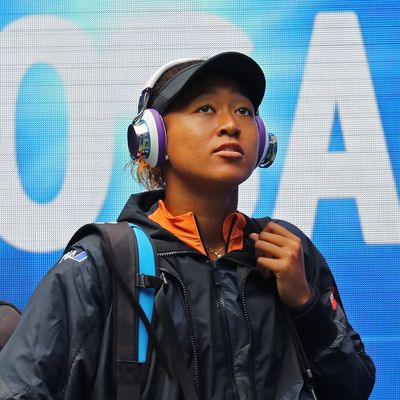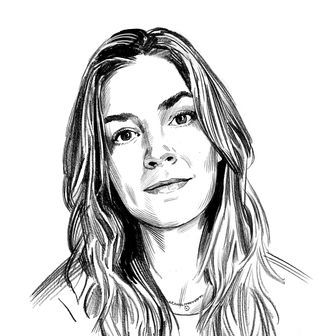
Over the past few months, tennis star Naomi Osaka has made her concerns about post-match press requirements clear: They can take a heavy toll on athletes’ mental health, and she would prefer to be selective about when she sits for them. This feels fair given how frequently athletes wind up in tears after being bombarded with probing questions immediately following a big loss. Obligating them to parade their disappointment in these moments turns their emotions into a spectacle, as Osaka noted in a recent essay for Time. Explaining her decision to drop out of the French Open and Wimbledon rather than do the obligatory media, she wrote, “I love the press; I do not love all press conferences.” And watching her news conference on Monday, you can see why.
The virtual presser, her first since she withdrew from the French Open in June, took place before the Western & Southern Open in Mason, Ohio. At the beginning, she fielded questions about her mental health, the catalyst behind her decision to skip the tournaments earlier this summer (“I think it’s something that needed to be done”), and about her early exit from the Olympics (“I feel very sad about how I did there but also a little bit happy I didn’t lose in the first round as well because I haven’t played”). But a question from Paul Daugherty, a journalist with the Cincinnati Enquirer, kicked off an exchange that ended in tears.
“You are not crazy about dealing with us, especially in this format,” Daugherty told her. “Yet you have a lot of outside interests that are served by having a media platform. I guess my question is, How do you balance the two?” When Osaka asked what he was referring to, he continued, “Well, you’ve said you don’t especially like the news-conference format, yet that seems to be obviously the most widely used means of communicating to the media and, through the media, to the public.”
In response, Osaka noted that she has lived with an outsize degree of public interest and scrutiny from a young age because of the simple fact of being very good at her sport. “I can’t really help that there are some things that I tweet or some things that I say that kind of create a lot of news articles or things like that. I know it’s because I’ve won a couple grand slams and I’ve gotten to do a lot of press conferences where these things happen,” she said. “But I would also say I’m not really sure how to balance the two. I’m figuring it out at the same time as you are, I would say.”
Fair enough! But in the transition to the next reporter — who wanted to ask about tennis and Osaka’s reaction to a devastating earthquake in her father’s home country, Haiti — Osaka began to cry. She walked away from the microphones, pausing interviews for five minutes to collect herself.
Although Daugherty suggested in his subsequent column that he had not intended to antagonize Osaka, whose “honest, thoughtful” answer he praised, his questions sounded accusatory to some. Another journalist called out his “aggressive tone,” while Osaka’s agent labeled Daugherty a “bully” and the “epitome of why player-media relations are so fraught right now.” And it’s not hard to read his question as, How do you reconcile your reliance on the media with your dislike of the media? A presumption that, even as a member of the media, I find somewhat self-aggrandizing. Osaka doesn’t owe reporters anything, nor does she need them to communicate her thoughts to the public. She can do that herself, directly, on her own terms. In her essay for Time, she asked for the space to speak only when she wants to speak and for a relationship with the press that feels “less subject vs. object; more peer to peer” because “athletes are humans.” Maybe we could simply let them live?


